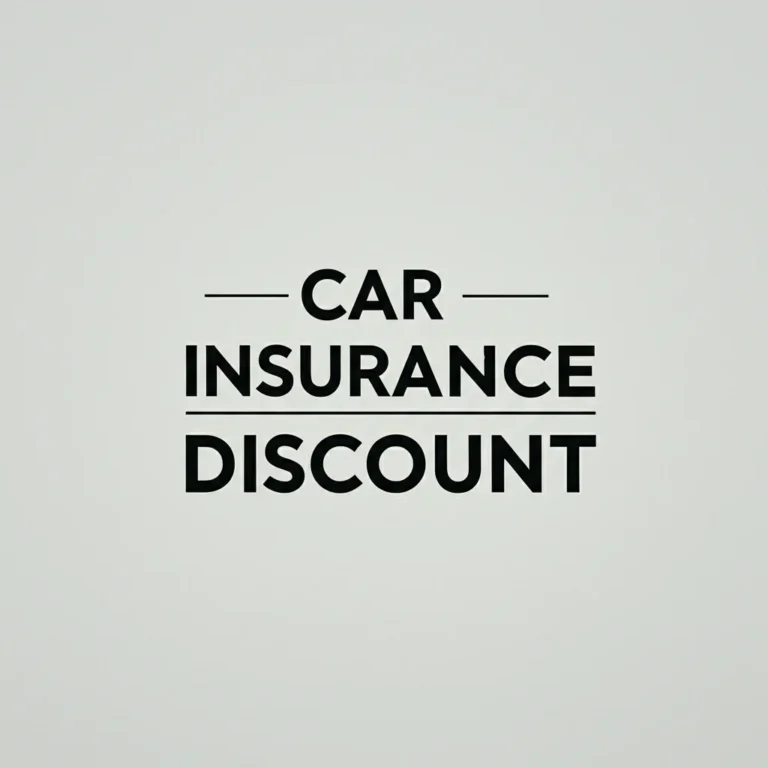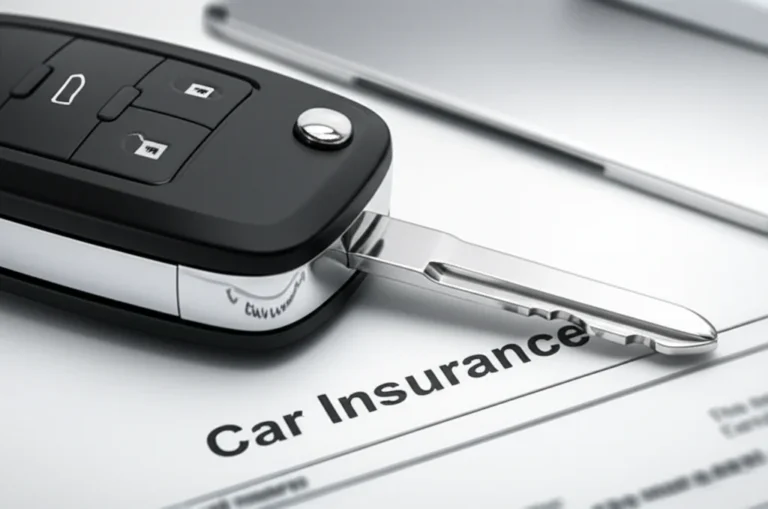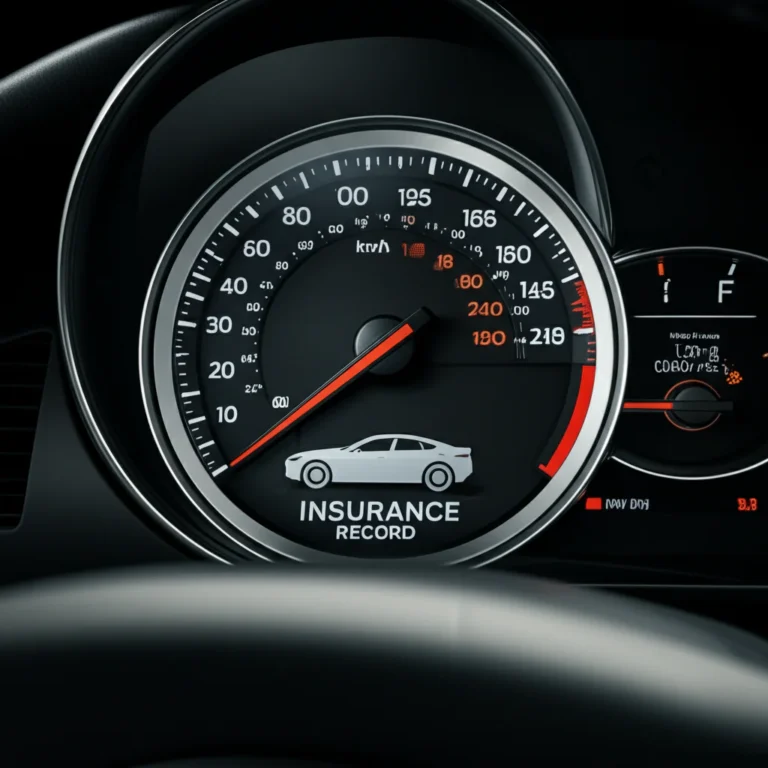Support our educational content for free when you purchase through links on our site. Learn more
What Types of Car Insurance Coverage Are Available? 🚗 (2025)
Ever felt like car insurance is a maze of confusing terms and fine print? You’re not alone! With so many coverage options out there, choosing the right protection can feel like trying to pick the perfect gear ratio on a foggy mountain road—tricky and full of surprises. Did you know that nearly 1 in 7 drivers on U.S. roads are uninsured? That’s a staggering risk factor that makes understanding your insurance coverage more critical than ever.
In this comprehensive guide, we at Car Brands™ peel back the layers of car insurance coverage—from the must-have liability protection to the lesser-known gems like gap insurance and pet injury coverage. Whether you’re a first-time buyer, a seasoned driver, or a rideshare pro, we’ll help you navigate the options, avoid costly pitfalls, and tailor a policy that fits your lifestyle and budget. Stick around, because later we’ll reveal insider tips on how to save money without sacrificing coverage, and why some optional coverages might just be your new best friend on the road.
Key Takeaways
- Liability coverage is legally required and protects others from damages you cause.
- Collision and comprehensive cover your own vehicle against crashes and unexpected events.
- Uninsured and underinsured motorist coverage shields you from risky drivers without adequate insurance.
- Optional coverages like gap insurance, roadside assistance, and rideshare insurance can provide vital extra protection tailored to your needs.
- Review your policy regularly to adjust coverage as your life and driving habits change.
- Smart shopping and bundling can unlock significant discounts—don’t leave money on the table!
Ready to take control of your car insurance and drive with confidence? Let’s dive in!
Table of Contents
- ⚡️ Quick Tips and Facts
- 🚗 The Road to Protection: A Brief History of Auto Insurance & Why It Matters
- The Essential Car Insurance Coverage Types: Your Shield on the Road
- 1. 🛡️ The Foundation: Understanding Liability Car Insurance Coverage
- 2. 💥 Protecting Your Ride: Collision and Comprehensive Coverage Explained
- 3. 🩹 Healing Hands: Personal Injury Protection (PIP) and Medical Payments (MedPay) Coverage
- 4. 👻 Guarding Against the Unknown: Uninsured and Underinsured Motorist Coverage
- Beyond the Basics: Specialized & Optional Auto Insurance Coverages You Might Need
- 5. 💰 Bridging the Gap: What is Gap Insurance and Do You Need It?
- 6. 🚗💨 Rental Car Reimbursement: Staying Mobile After an Accident
- 7. 🛠️ Roadside Assistance: Your On-Call Hero for Breakdowns
- 8. ⚙️ Custom Parts & Equipment Coverage: Protecting Your Mods
- 9. 🚗 Rideshare Insurance: Driving for Uber/Lyft? Get Covered!
- 10. 🚘 New Car Replacement Coverage: Drive Off with Peace of Mind
- 11. 📉 Diminished Value Coverage: When Your Car Loses Value After a Crash
- 12. 🐾 Pet Injury Coverage: Because Fido is Family Too!
- 13. 🔑 Key Replacement Coverage: Don’t Get Locked Out of Your Wallet
- 14. 🗺️ Travel Interruption Coverage: When Accidents Happen Far From Home
- Making Smart Choices: Tailoring Your Auto Insurance Policy
- 🤔 How Much Car Insurance Do You Really Need? Finding Your Sweet Spot
- ⚖️ Balancing Act: Deductibles vs. Premiums – What’s Your Risk Tolerance?
- 💸 Smart Savings: Discounts and Bundling Strategies for Lower Premiums
- 📝 Decoding the Policy: What to Look For in Your Insurance Documents
- 🔄 When to Review Your Coverage: Life Changes and Policy Updates
- 🏁 Conclusion: Driving Forward with Confidence
- 🔗 Recommended Links for Further Reading
- ❓ FAQ: Your Burning Car Insurance Questions Answered
- 📚 Reference Links
Alright, buckle up, fellow gearheads! The team at Car Brands™ is here to pop the hood on one of the most confusing yet crucial parts of car ownership: car insurance. We get it. Reading an insurance policy can feel like trying to decipher ancient hieroglyphics while blindfolded. But fear not! We’re going to break down the different types of car insurance coverage available, ditch the jargon, and give you the straight talk you need to protect yourself and your beloved ride.
Let’s get this engine started!
⚡️ Quick Tips and Facts
Before we dive deep, here are a few tasty tidbits to get your RPMs up:
- It’s the Law! 📜 Liability insurance is legally required in almost every state to protect others from your mistakes on the road.
- The Uninsured Threat: An estimated 14% of U.S. drivers are uninsured. That’s about one in every seven drivers on the road! This makes Uninsured Motorist coverage more of a necessity than a luxury.
- Lenders Have Rules, Too: If you finance or lease your car, your lender will almost certainly require you to carry both Collision and Comprehensive coverage to protect their investment (and yours!).
- No-Fault vs. At-Fault: Twelve states are considered “no-fault” states, where your own insurance (specifically Personal Injury Protection) covers your initial medical bills regardless of who caused the accident.
- Discounts Galore: Most insurers offer a buffet of discounts. Think good student, safe driver, bundling policies, and even having certain safety features in your car. Always ask what’s available!
🚗 The Road to Protection: A Brief History of Auto Insurance & Why It Matters
Ever wonder how this whole car insurance thing started? It wasn’t just some scheme cooked up in a boardroom. Picture this: the late 1890s. Cars are a wild new invention, sputtering down cobblestone streets, scaring horses, and generally causing a ruckus. There were no traffic lights, no stop signs, and definitely no driver’s ed!
The first auto insurance policy was reportedly sold in 1897 by Travelers Insurance Company. It was a liability-only policy, designed to protect the car owner from being sued into oblivion if they happened to run over someone’s prize-winning petunias or, worse, another person.
As more cars hit the road, the number of accidents skyrocketed. States realized they had a problem. In 1925, Massachusetts and Connecticut became the first states to pass laws requiring some form of financial responsibility for drivers. This was the beginning of the mandatory insurance system we know today, a system designed to create a safety net for everyone on the road. You can learn more about the fascinating evolution of specific brands in our Car Brand Histories section.
The Essential Car Insurance Coverage Types: Your Shield on the Road
Think of your auto insurance policy as a customizable suit of armor. You wouldn’t go into battle with just a helmet, right? You need different pieces to protect different parts. Let’s break down the core components.
1. 🛡️ The Foundation: Understanding Liability Car Insurance Coverage
This is the big one, the absolute bare minimum you must have in most states. Liability coverage pays for damage you cause to other people and their property. It does not cover your own car or your own injuries. It’s all about taking financial responsibility for your actions behind the wheel.
As NerdWallet puts it, “Liability coverage is legally required in almost every state.” It’s typically split into two parts:
Bodily Injury Liability (BI)
If you’re at fault in an accident that injures someone, this coverage helps pay for their medical expenses, lost wages, and even “pain and suffering.” Imagine you cause a fender-bender that gives the other driver whiplash. Your BI coverage would step in to handle their medical bills, so you’re not stuck paying out-of-pocket.
Property Damage Liability (PD)
This covers the cost of repairing or replacing property you damage in an at-fault accident. This most commonly means the other person’s car, but it could also include a fence, a mailbox, a storefront… you name it.
2. 💥 Protecting Your Ride: Collision and Comprehensive Coverage Explained
Okay, so liability covers them. But what about your car? That’s where these two heroes come in. They are often sold together and, as mentioned, are usually required by lenders for financed or leased vehicles.
Collision Coverage
Just like it sounds, Collision coverage helps pay to repair or replace your car if it’s damaged in a collision with another vehicle or an object (like a tree, guardrail, or pothole), regardless of who is at fault. So, whether you back into a pole at the grocery store or get rear-ended in traffic, this is the coverage that gets your car back on the road.
Comprehensive Coverage
This is the “everything else” coverage. Comprehensive protects your vehicle against damage from events other than a collision. Think of it as the shield against the weird, unpredictable stuff life throws at you.
| ✅ What Comprehensive Typically Covers | ❌ What It Typically Doesn’t Cover |
|---|---|
| Theft & Vandalism 😠 | Collision with another car or object (that’s Collision coverage) |
| Fire, Hail, Floods, and other weather events ⛈️ | Normal wear and tear (e.g., old tires, brake pads) |
| Hitting an animal (like a deer) 🦌 | Mechanical failure or breakdown (unless caused by a covered event) |
| Falling objects (tree branches, etc.) 🌳 | Personal items stolen from your car (often covered by home/renters) |
As the experts in the featured video point out, Comprehensive covers “almost any other type of direct accidental loss not excluded by your policy.”
3. 🩹 Healing Hands: Personal Injury Protection (PIP) and Medical Payments (MedPay) Coverage
These coverages are all about taking care of you and your passengers after an accident. They kick in regardless of who was at fault, which is a huge stress reliever when you should be focused on recovery.
Personal Injury Protection (PIP)
Often called “no-fault” insurance, PIP is a broader coverage that helps pay for medical expenses for you and your passengers after an accident. But it doesn’t stop there! Depending on the state, it can also cover:
- Lost wages if you can’t work
- Rehabilitation costs
- Essential services you can no longer perform, like childcare
PIP is mandatory in a dozen or so “no-fault” states, including places like Florida, Michigan, and New York. In these states, you turn to your own PIP coverage first for injuries, which helps streamline the claims process and reduce lawsuits.
Medical Payments (MedPay)
MedPay is similar to PIP but more limited. It specifically covers medical and funeral expenses for you and your passengers resulting from an accident, regardless of fault. It doesn’t include coverage for lost wages or other non-medical costs. It’s optional in most states and can be a good supplement to your health insurance, helping to cover deductibles and co-pays.
4. 👻 Guarding Against the Unknown: Uninsured and Underinsured Motorist Coverage
Remember that scary stat about 1 in 7 drivers being uninsured? This is your defense against them. What happens if one of them hits you? Without this coverage, you could be left holding a massive bill for car repairs and medical expenses.
Uninsured Motorist (UM)
This coverage steps in when you’re hit by a driver who has no liability insurance at all. It can help pay for:
- Your medical bills (UM Bodily Injury)
- Repairs to your car (UM Property Damage, available in some states)
Underinsured Motorist (UIM)
This is for when the at-fault driver has insurance, but their liability limits are too low to cover all your expenses. For example, say they have a $25,000 bodily injury limit, but your medical bills are $50,000. Your UIM coverage could kick in to cover the remaining $25,000.
Given the high number of uninsured drivers, which the YouTube video summary highlights as “1/7 is UNinsured!”, we at Car Brands™ consider this an essential piece of your insurance armor.
Beyond the Basics: Specialized & Optional Auto Insurance Coverages You Might Need
Now that we’ve covered the “big four,” let’s look at the à la carte menu. These optional coverages let you fine-tune your policy for your specific needs.
5. 💰 Bridging the Gap: What is Gap Insurance and Do You Need It?
Here’s a scary thought: cars depreciate fast. The moment you drive a new car off the lot, it’s worth less than what you paid. If you have a loan or lease, you could find yourself “upside-down,” meaning you owe more on the car than it’s actually worth.
If your car is totaled or stolen, your collision or comprehensive coverage will only pay out its actual cash value (ACV), not what you owe. Gap insurance covers the “gap” between what insurance pays and what you still owe the bank.
Do you need it? ✅ You should strongly consider it if you:
- Made a small down payment (less than 20%)
- Financed for 60 months or longer
- Leased your vehicle
- Bought a vehicle that depreciates quickly (check out our Car Brand Comparisons for insights!)
6. 🚗💨 Rental Car Reimbursement: Staying Mobile After an Accident
If your car is in the shop for repairs after a covered claim, how will you get to work? School? The grocery store? Rental reimbursement coverage helps pay for a rental car while your primary vehicle is being fixed. It’s usually very affordable to add and can be a lifesaver.
7. 🛠️ Roadside Assistance: Your On-Call Hero for Breakdowns
We’ve all been there. A flat tire, a dead battery, or—the ultimate rookie move—locking your keys in the car. Roadside assistance provides 24/7 help for these common headaches. Services typically include:
- Towing
- Battery jump-starts
- Flat tire changes
- Fuel delivery
- Lockout services
While you can get this through services like AAA, adding it to your insurance policy is often a convenient and cost-effective option.
8. ⚙️ Custom Parts & Equipment Coverage: Protecting Your Mods
Love to customize your ride? Whether it’s a killer sound system, custom wheels, or a high-performance engine upgrade, standard policies usually won’t cover these modifications. Custom Parts and Equipment (CPE) coverage protects the value of your aftermarket additions. If you’ve invested in making your car unique, you need to invest in protecting it.
9. 🚗 Rideshare Insurance: Driving for Uber/Lyft? Get Covered!
If you drive for a service like Uber or Lyft, listen up! Your personal auto policy likely does not cover you when you’re working. As Progressive notes, “Some insurers may require [rideshare coverage] if you drive for a rideshare company.” This specialized coverage bridges the gap between your personal policy and the insurance provided by the rideshare company, ensuring you’re protected at all times.
10. 🚘 New Car Replacement Coverage
This is a step above Gap insurance. If your brand-new car is totaled, this coverage won’t just pay off the loan—it will help you buy a brand new car of the same make and model. It’s the ultimate do-over button for a worst-case scenario.
11. 📉 Diminished Value Coverage: When Your Car Loses Value After a Crash
Even after perfect repairs, a car with an accident history is worth less than one without. That loss in value is called “diminished value.” In some states and with some insurers, you can get coverage or file a claim to be compensated for this loss, helping you recoup more of your car’s original worth.
12. 🐾 Pet Injury Coverage: Because Fido is Family Too!
For many of us, our pets are family. If your furry co-pilot is injured in a car accident, this add-on can help cover their vet bills. It’s a small addition that provides huge peace of mind for animal lovers.
13. 🔑 Key Replacement Coverage: Don’t Get Locked Out of Your Wallet
Modern car keys with their integrated fobs and chips are incredibly expensive to replace. If you lose your keys or they get stolen, this coverage can save you from a surprisingly hefty bill.
14. 🗺️ Travel Interruption Coverage: When Accidents Happen Far From Home
If you have a covered claim while you’re far from home (usually a set distance, like 100 miles), this coverage can help reimburse you for extra expenses like lodging, meals, and transportation. It’s a must-have for road trip warriors.
Making Smart Choices: Tailoring Your Auto Insurance Policy
Choosing the right coverage is more art than science. It’s about finding the perfect balance for your car, your budget, and your peace of mind.
🤔 How Much Car Insurance Do You Really Need? Finding Your Sweet Spot
While every state has minimum liability requirements, we’ll be blunt: state minimums are almost never enough. A serious accident can easily exceed those low limits, leaving you personally on the hook for tens or even hundreds of thousands of dollars.
A good rule of thumb for liability is to choose limits that protect your assets (your home, savings, etc.). Many experts recommend at least $100,000 in bodily injury liability per person, $300,000 per accident, and $100,000 in property damage liability.
⚖️ Balancing Act: Deductibles vs. Premiums – What’s Your Risk Tolerance?
Here’s the fundamental trade-off in insurance:
- A higher deductible (the amount you pay out-of-pocket on a claim) means a lower premium (your regular payment).
- A lower deductible means a higher premium.
Your deductible applies to coverages like Collision and Comprehensive. When choosing, ask yourself: “How much could I comfortably pay out-of-pocket tomorrow if I had an accident?” Choose a deductible that fits your emergency fund.
💸 Smart Savings: Discounts and Bundling Strategies for Lower Premiums
Never pay sticker price for insurance! Insurers are eager to reward good customers. Here are some of the most common discounts to ask about:
- Multi-Policy (Bundling): Combining your auto insurance with your home or renters policy from the same company can lead to big savings.
- Multi-Car: Insuring more than one vehicle on the same policy.
- Safe Driver: Maintaining a clean record with no accidents or violations.
- Good Student: For young drivers who maintain a “B” average or better.
- Safety Features: Having anti-lock brakes, airbags, or an anti-theft device can lower your premium.
- Low Mileage: If you don’t drive much, you’re less of a risk!
- Pay-in-Full / Autopay: Paying your entire premium upfront or signing up for automatic payments can often earn you a discount.
📝 Decoding the Policy: What to Look For in Your Insurance Documents
When you get your policy, don’t just file it away. Look at the Declarations Page. This is the summary of your coverage. Check these key things:
- Coverages: Are all the types of coverage you selected listed?
- Limits: Are the dollar amounts for your liability and other coverages correct?
- Deductibles: Is the deductible amount what you agreed to?
- Listed Drivers & Vehicles: Are all the drivers in your household and all your vehicles correctly listed?
- Discounts: Are all the discounts you qualify for being applied?
If anything looks wrong, call your agent immediately.
🔄 When to Review Your Coverage: Life Changes and Policy Updates
Your insurance needs aren’t static. It’s smart to review your policy at least once a year, and especially after major life events:
- Buying a new car: A newer car may need higher limits or Gap coverage.
- Moving: Rates can change dramatically based on your zip code.
- Getting married: Married couples often get lower rates.
- Adding a driver: Especially a teen driver, which will significantly impact your premium.
- Changing jobs: A shorter commute could mean a low-mileage discount.
- Paying off your car loan: Once you own your car outright, you might consider dropping Collision and Comprehensive if its value is low.
🏁 Conclusion: Driving Forward with Confidence
So, what have we learned on this joyride through the world of car insurance coverage? Whether you’re a daily commuter, a weekend cruiser, or a rideshare warrior, understanding the types of coverage available is your best defense against the unexpected. From the mandatory liability coverage that keeps you legally compliant, to the optional extras like Gap insurance and roadside assistance that add layers of convenience and peace of mind, every piece plays a role in your personal insurance puzzle.
Remember our earlier question: How much coverage do you really need? The answer isn’t one-size-fits-all. It depends on your car’s value, your financial cushion, your state’s laws, and your appetite for risk. But one thing’s for sure: skimping on liability or uninsured motorist protection is a gamble no savvy driver should take.
At Car Brands™, we recommend starting with a solid foundation of liability, collision, and comprehensive coverage, then layering on extras that fit your lifestyle and budget. Don’t forget to shop around, ask about discounts, and review your policy annually or after major life changes.
Insurance might not be the most thrilling part of owning a car, but it’s the safety net that lets you enjoy the ride without fear. Now that you’re armed with knowledge, go forth and drive confidently!
🔗 Recommended Links for Further Reading & Shopping
If you’re ready to explore insurance options or want to check out vehicles that might influence your coverage needs, here are some handy links:
-
👉 Shop Gap Insurance Options on:
-
Explore Rideshare Insurance:
-
Find Roadside Assistance Plans:
-
Compare Custom Parts & Equipment Coverage:
❓ FAQ: Your Burning Car Insurance Questions Answered
What is the difference between liability and comprehensive car insurance?
Liability insurance is your legal safety net, covering damages and injuries you cause to others in an accident. It does not cover your own vehicle or injuries. Think of it as protecting them from you.
Comprehensive insurance, on the other hand, covers damage to your vehicle caused by non-collision events like theft, vandalism, weather, or hitting an animal. It’s your protection against the unpredictable.
How does collision coverage protect my vehicle?
Collision coverage pays to repair or replace your car if it’s damaged in a collision with another vehicle or object, regardless of fault. Whether you rear-end someone, hit a guardrail, or get hit by another driver, collision coverage helps get your car back on the road after you pay your deductible.
Are uninsured motorist protections necessary in car insurance?
Absolutely! With roughly 14% of drivers uninsured nationwide, uninsured motorist (UM) coverage protects you if you’re hit by someone without insurance. It covers medical expenses and, in some states, property damage. Underinsured motorist (UIM) coverage fills the gap if the at-fault driver’s insurance isn’t enough to cover your costs. Without UM/UIM, you could be stuck paying hefty bills yourself.
What optional car insurance coverages can I add for extra protection?
There’s a smorgasbord of optional coverages to tailor your policy, including:
- Gap insurance (covers loan/lease balance if your car is totaled)
- Rental car reimbursement (keeps you mobile during repairs)
- Roadside assistance (towing, lockout help, etc.)
- Custom parts and equipment coverage (protects aftermarket mods)
- Rideshare insurance (for Uber/Lyft drivers)
- New car replacement coverage
- Diminished value coverage
- Pet injury coverage
- Key replacement coverage
- Travel interruption coverage
Each adds a layer of protection depending on your lifestyle and vehicle.
How do state requirements affect the types of car insurance I need?
State laws dictate minimum required coverages, typically liability insurance. Some states mandate additional coverages like Personal Injury Protection (PIP) or Uninsured Motorist coverage. For example, no-fault states require PIP, while others do not. Always check your state’s Department of Insurance website to know your legal obligations and avoid penalties.
What factors influence the cost of different car insurance coverages?
Insurance premiums are influenced by:
- Your driving record and claims history
- Age, gender, and marital status
- Location and commute distance
- Vehicle make, model, and year
- Coverage limits and deductibles chosen
- Credit score (in most states)
- Discounts applied (safe driver, bundling, etc.)
Higher coverage limits and lower deductibles generally increase premiums, while discounts and good driving habits can reduce costs.
Can I customize my car insurance policy based on my driving habits?
Yes! Many insurers offer usage-based or pay-per-mile insurance programs that track your driving behavior and mileage. Safe, low-mileage drivers can save significantly. Additionally, you can adjust coverage types and limits, add optional coverages, and select deductibles that fit your risk tolerance and budget. Regularly reviewing your policy ensures it matches your current driving habits and needs.
📚 Reference Links
For those who want to dig deeper or verify facts, here are some authoritative sources we referenced:
- NerdWallet: Types of Car Insurance
- Progressive: Types of Car Insurance Coverages
- Insurance Information Institute: Auto Insurance Basics
- National Association of Insurance Commissioners (NAIC)
- AAA: Roadside Assistance
- Geico: Gap Insurance
- State Farm: Rideshare Insurance
For more on car insurance and related topics, visit our Car Insurance section and explore our Car Brand Comparisons for insights on vehicles that might affect your insurance needs.
Ready to hit the road with confidence? Your insurance coverage is your co-pilot—make sure it’s up to the task! 🚘✨






